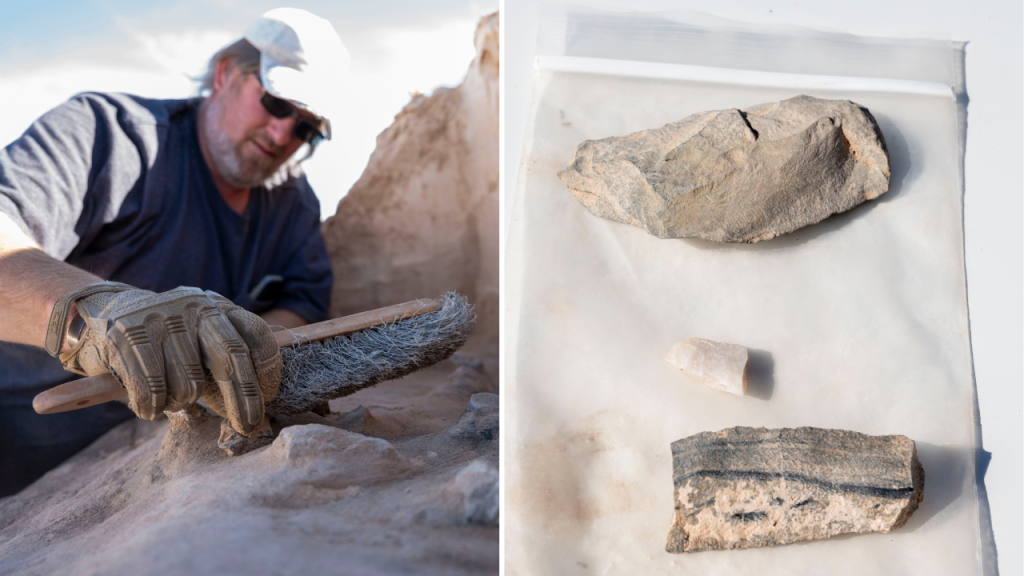United States Air Force (USAF) service members recently discovered an ancient campsite that dates back over 8,000 years on Holloman Air Force Base in New Mexico. The 8,200-year-old campsite was discovered buried around two meters deep by 49th Civil Engineer Squadron environmental flight members and geomorphologists. The site, named Gomolak Overlook, was found near the borders of the military base and was buried by sands from nearby White Sands National Park over thousands of years. The campsite contained a hearth with charcoal stains, indicating the early settlers’ reliance on fire. Approximately 70 items, ranging from flake stones to a rare example of an early ground stone, were found, providing valuable clues about past human activities.
The artifacts found at the ancient campsite will be studied and preserved, in accordance with the National Historic Preservation Act. Scott Dorton, the 49th CES environmental chief, emphasized the importance of preserving the site’s integrity while allowing for progress on the test track project. The Department of Defense’s stewardship of vast tracts of land, including areas between White Sands National Park and Holloman, inadvertently protects numerous archaeological resources. The discoveries at the Gomolak Overlook offer insights into early human adaptation and environmental changes, shedding light on the area’s history and its early inhabitants.
The discovery of the ancient campsite on Holloman Air Force Base is a significant find, providing valuable information about the early settlers of New Mexico and their way of life over 8,000 years ago. The artifacts found at the site, including hearths and various tools, offer insights into past human activities and cultural practices. The USAF’s commitment to preserving and documenting these cultural resources for future generations highlights the importance of balancing progress and development with the protection of historically significant sites.
The significance of the Gomolak Overlook discovery extends beyond just the historical value of the artifacts found at the site. The preservation of archaeological resources on Department of Defense land, such as the area between White Sands National Park and Holloman Air Force Base, ensures that some of the best-preserved archaeological records in the Tularosa Basin are protected. The accidental protection of these resources underscores the importance of stewardship and conservation efforts in safeguarding our cultural heritage.
The USAF’s collaboration with experts in cultural resource management and archaeology demonstrates a commitment to responsible stewardship of the land under its jurisdiction. By adhering to the National Historic Preservation Act and taking steps to preserve the integrity of the ancient campsite while allowing for the progress of other projects, the USAF is setting an example for how to balance development with cultural preservation. The insights gained from the discovery of the Gomolak Overlook site contribute to our understanding of early human adaptation and environmental changes in the region.
Overall, the discovery of the ancient campsite on Holloman Air Force Base represents a significant milestone in uncovering the history of New Mexico’s early inhabitants. The valuable artifacts found at the site provide clues about the past human activities and cultural practices that shaped the region over 8,000 years ago. By prioritizing the preservation and documentation of these archaeological resources, the USAF is setting a precedent for responsible land stewardship and cultural heritage conservation. Future research and study of the artifacts will continue to enhance our understanding of the area’s history and the lives of its early settlers.















